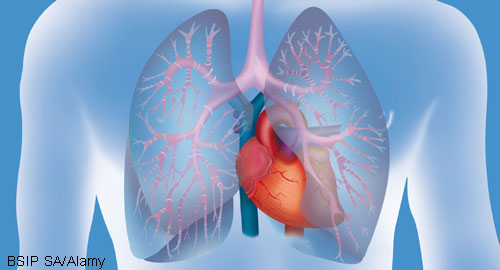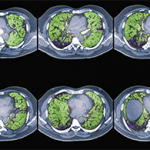 Connective tissue disease-associated interstitial lung disease (CTD-ILD) doesn’t recognize the difference between pulmonologists and rheumatologists, says Aryeh Fischer, MD, associate professor of medicine, Division of Rheumatology, Division of Pulmonary Sciences and Critical Care Medicine, at University of Colorado School of Medicine in Denver. Thus, “we need to be less rigid in our subspecialization (i.e., have fewer academic and clinical ‘silos’).
Connective tissue disease-associated interstitial lung disease (CTD-ILD) doesn’t recognize the difference between pulmonologists and rheumatologists, says Aryeh Fischer, MD, associate professor of medicine, Division of Rheumatology, Division of Pulmonary Sciences and Critical Care Medicine, at University of Colorado School of Medicine in Denver. Thus, “we need to be less rigid in our subspecialization (i.e., have fewer academic and clinical ‘silos’).
“These multisystem diseases mandate a multisystem approach,” he adds. “And unfortunately, our training system after general internal medicine often breeds more of a compartmentalized approach.”
Pulmonologists and rheumatologists can work together on many clinical and practice management decisions relating to connective tissue disease to improve patient care, Dr. Fischer says. For example, both specialists need to proactively focus on the status of patients’ lungs, because “waiting for symptoms is too late.” What Dr. Fischer means is that patients with rheumatic disease lead sedentary lifestyles. That lack of activity means that if pulmonologists wait until symptoms of lung issues develop, it might be too late to solve those issues. Instead, more proactive attention paid to the lungs could help prevent those problems from ever developing, Dr. Fischer believes.
Dr. Fischer says pulmonologists dealing with rheumatologic patients should attempt to view the patient’s signs and symptoms from the rheumatologist’s point of view. And vice versa.
“We need to better understand our respective perspectives and how we approach our shared diseases,” he adds. “I think CTD-ILD is a paradigm for such collaboration. I have been fortunate to work mostly within a ‘lung’ environment. This has helped me better appreciate where the pulmonologist is coming from.
“It has helped me understand the scenario when a pulmonary provider may suggest there is an autoimmune component to a patient’s lung disease—even in the absence of more characteristic extrathoracic manifestations of CTD. So when my pulmonary colleague tells me, ‘I think the ILD may be autoimmune,’ I feel I have a better appreciation for that perspective by appreciating their approach.”
Sometimes that collaboration is forced by circumstances, because a rheumatologist may not have the time to be involved in one part of a patient’s case.
“If we are not going to assess for lung involvement ourselves—a realistic limitation given the numerous other aspects needing to be addressed, short visits, etc.—then we should consider having our patients see [a pulmonologist] for ‘screening’ assessments for multi-compartment lung disease,” Dr. Fischer adds. “If rheumatologists are not able to assess for lung involvement, then pulmonary referral is indicated for these assessments in any of our higher-risk patients, essentially any of our patients with connective tissue disease. Waiting for symptoms is too late. All CTD patients are at risk for lung disease—some more than others—and if we aren’t going to be able to assess for occult lung disease, then we need dedicated pulmonary consultation to do it for us.”


